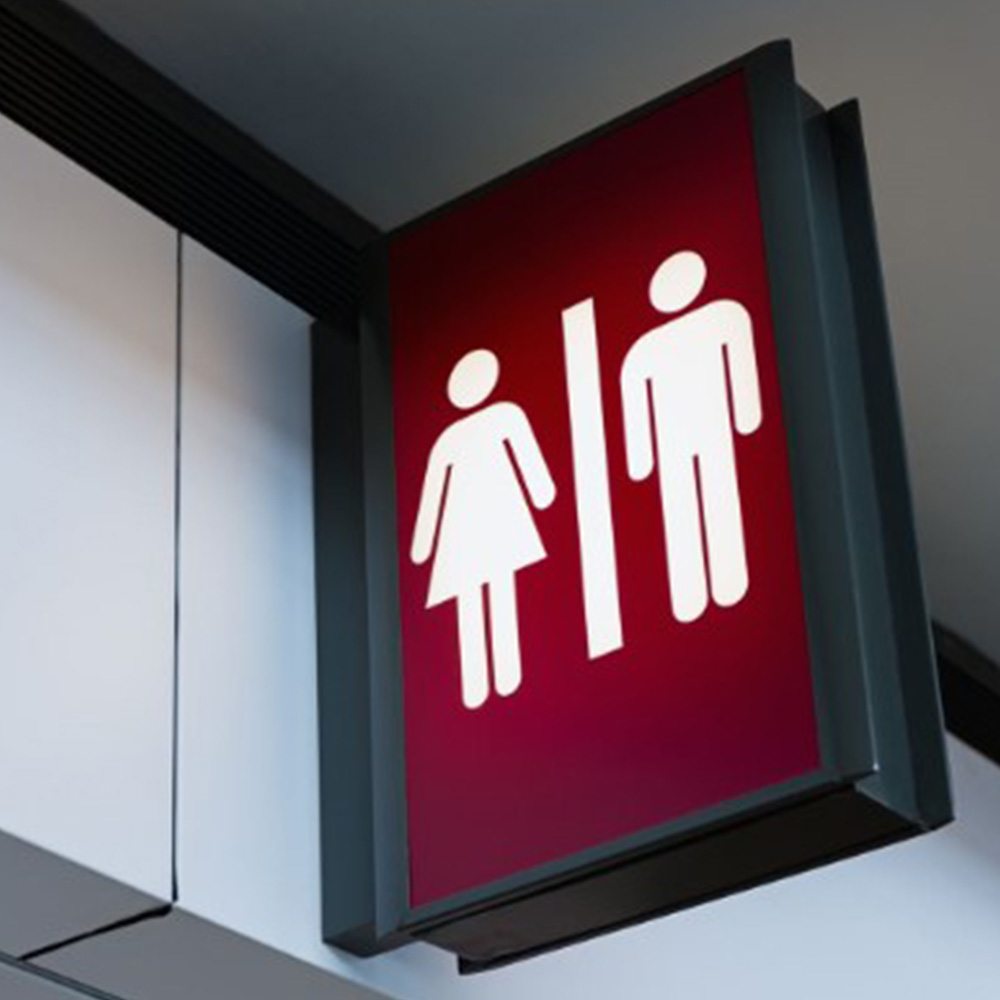Even though the chances of getting sick after using the public restrooms are relatively slim, why would you risk it? Here are a few tips to help you minimize your risk even further…
It’s Stall Choice
A study carried out in 1995 at the University of California, San Diego recorded how much toilet paper was used in the four stalls found in the men’s public restrooms at a state beach. During the ten-week research period, it was found that 60% of the paper was used in the middle two stalls, suggesting that these stalls were the most popular and most commonly used. Working on the logic that the stalls were all cleaned with the same frequency, the cleanest and less used stalls should be the end stalls.
However, do look for yourself. If the end stalls look particularly gross – go for the middle, most used stalls! Oh, and do everyone else a favor and mention any grim stalls to an attendant if you see one!
Toilet Seat Terror
With a whole host of horror stories doing the rounds for years regarding toilet seats in public restrooms, it is worth knowing that according to the former president of the American Society of Microbiology Abigail Salyers, there isn’t a need to worry. “To my knowledge, no one has ever acquired an S.T.D from the toilet seat, unless they were having sex on the toilet seat.”
In order to capture something horrid from a toilet seat, the germs on the seat would have to travel into your urinary or genital tract or alternatively get into your body via an open cut or sore. It is of course easier for germs to enter the body should they encounter your hands, due to the fact that your hands and fingers could transfer the germs to your mouth, nose or eyes – yuck. (Note to self: never touch face in public restrooms!)
However, if you do still feel quite repulsed by using a toilet seat, you could sanitize the seat with an alcohol-based wipe before sitting down – just remember to dispose of the wipe in a responsible way.
Although people used to line seats with toilet paper, this is now seen as hugely wasteful and not as hygienic as you might think. The toilet paper is likely to have germs on it due to the last time the toilet was flushed, as its likely aerosolized germs from the toilet flew directly into the air, which could have settled onto the toilet paper – yuck!
Most public restroom toilets do not have lids, but if they do, drop the lid down before flushing to stop the spread of toilet germs in the air.
Ladies Who Squat
Additional research has shown that most women like to squat or hover over a toilet seat in order to eliminate the risk of germs and touching a seat. But there are risks here too, just maybe not what you think.
In a squatting position, it is hard to fully relax the pelvic floor and empty the bladder completely which could pose the risk of further urinary tract infections.
But having said all of that, squatting is far better for the body than eschewing the restroom completely. Urologist at New York Presbyterian / Columbia University Irving Medical Center Dr. Doreen Chung says: “There are patients who hold in their urine who are then unable to relax their pelvic floor musculature to urinate.” But if you do choose to squat, ladies please be sweet, and wipe the seat!
Getting Handy
So as we all know, it is VERY important to wash hands after going to the toilet, especially in public restrooms. But just a simple quick wash won’t cut it.
In order to wash hands effectively to kill germs, you need to ensure that you are paying attention and washing thoroughly, including the back of the tops of the fingers as well as washing up to the wrist.
The chairman of Infectious Diseases Society of America’s Public Health Committee Dr. Weber suggests that hands are washed for a minimum of fifteen seconds using water at a comfortable temperature to ensure that the urge to rush isn’t present! Take time washing hands to ensure a thorough job.
BUT – here comes the next step – remembering not to touch anything after washing your hands! Apart from the flush in the stall itself, the faucet is likely to be the next best thing for germs, because everyone will turn the faucet on after going to the bathroom and with, you guessed it, dirty hands. If you have an automatic faucet, that’s great – go ahead and dry your hands, but if you must manually stop the water running, use a paper towel to dry hands and then turn off before binning in the trash.
Exit, Stage Left
Finally, what about when you wish to exit the restroom?
You have done your business (hopefully in a clean-ish stall) and have correctly washed and dried your hands, but what about getting out of the restroom?
Your hands won’t stay clean for long if you go ahead and touch the door or turn a door handle. If at all possible, use your shoulder, elbow or hip to open the door or if you need to pull the door, use the paper towel from earlier.
Even better, dart out after someone has opened the door to come in!
All in all, a trip to relieve yourself is important and you need to go to the toilet if nature calls. Catching illnesses and diseases from restrooms is rare, but with some general further awareness when it comes to toilet hygiene you should be fine. After all, germs won’t make you sick if you haven’t taken them with you.
PS – wash your hands!






